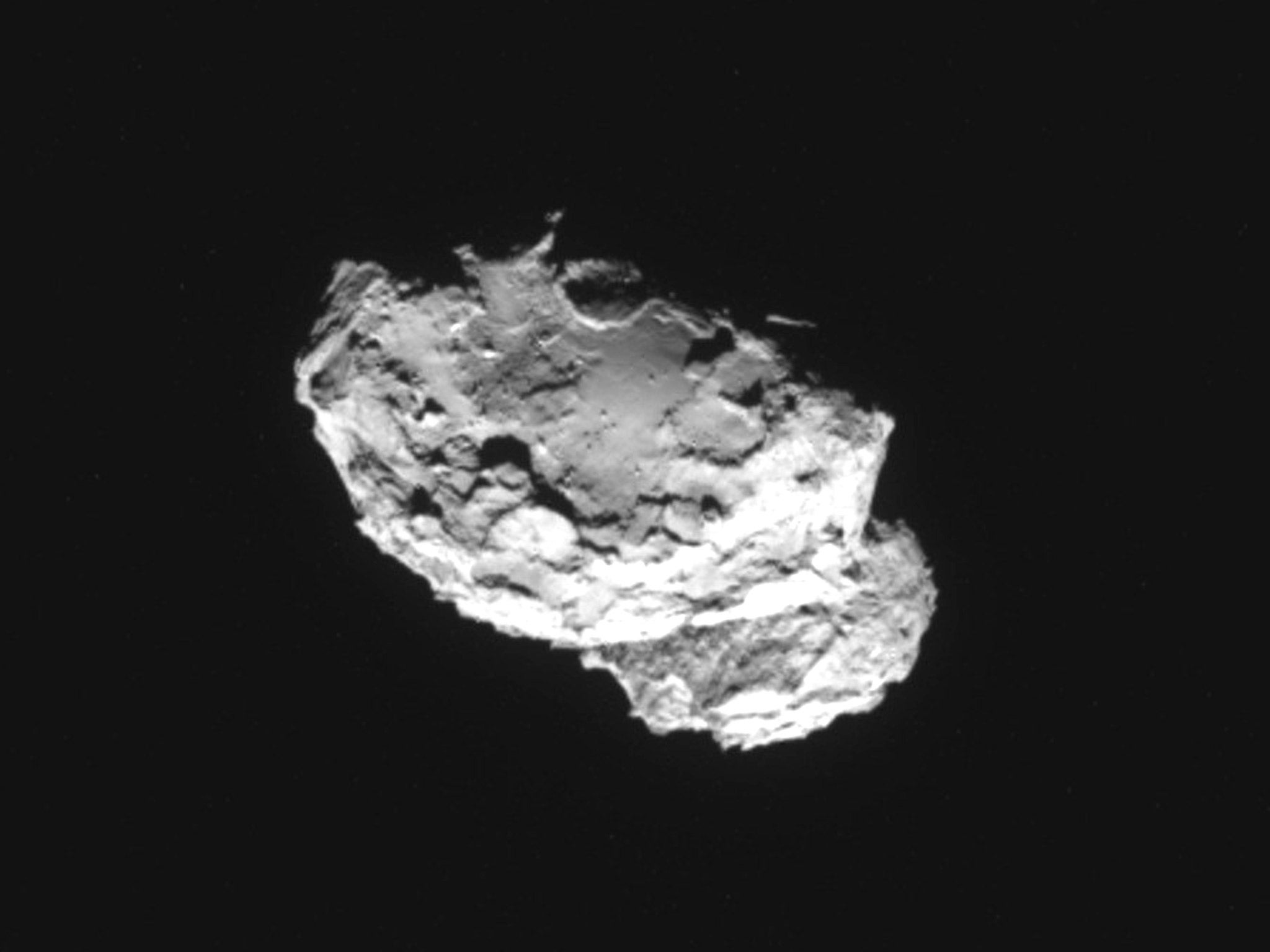After 10 years, Rosetta closes in on comet – but is there a place to land?

European space scientists are poised to make one of the most important decisions of the Rosetta mission following the spacecraft’s successful rendezvous yesterday with the comet 67P/Churnyumov-Gerasimenko at a distance of more than 250 million miles (402m km) from Earth.
Over the coming weeks the European Space Agency (ESA) will have to decide where to land its small robotic craft, Philae, which Rosetta has carried on its 10-year journey to the fast-moving comet, nicknamed “rubber duck” because of its odd, double-lobed shape.
Philae is scheduled this November to make the first controlled-descent on a comet but the success of the expedition relies heavily on finding a suitable landing spot on a comet that is the size of Mont Blanc.
Scientists hope to learn more about the origin of comets, which are believed to be remnants of the time when the Solar System was formed more than 4.5 billion years ago – and possibly whether it was a comet that delivered water and even the building blocks of life to the early Earth.
The 67P comet is travelling at 34,175 mph (55,000 kph) half way between the orbits of Jupiter and Mars. It took Rosetta 10 years, five months and four days to catch up with its quarry – finally confirmed yesterday when Sylvain Lodiot at ESA’s operations centre in Germany declared: “We’re at the comet!”
Rosetta’s speed has now been adjusted so that it is flying beside the comet at a slow walking pace in a triangular orbit that will allow ESA scientists to choose the best spot to land Philae.
“It’s like driving on a motorway at high speed. What we’re doing today is like entering a chaotic town with lots of traffic,” said Andrea Accomazzo, Rosetta’s mission director.
A handful of possible landing sites will be identified by the end of August before the primary landing spot is identified in mid-September, with a soft landing tentatively scheduled for 11 November, ESA said.
A suitable landing site for Philae should be free of holes, rocks and any craters that could tip the probe over. It also needs to be well away from the jets of gas that erupt from the comet’s icy interior as it approaches the warmth of the Sun.
Click HERE for full-size version of graphic
Philae will anchor itself to the comet with a harpoon designed to penetrate a surface that is as hard as wood or as soft as snow, but it will be critical to choose the most perfect spot to land.
“Our first clear views of the comet have given use plenty to think about,” said Matt Taylor, Rosetta’s project scientist, who said that the double-lobed structure of the comet suggests that it may either be built from two separate comets or have undergone heavy, irregular erosion.
Scientists from Britain have helped to design and build some of the instruments on board the shoe box-sized Philae, which will analyse grains of debris drilled 23cm below the comet’s surface in the hope of understanding its origins.
“Once the Philae lander touches down on the comet, we will be looking for evidence recorded in remnants of debris that survived the processes of planet formation,” said Ian Wright, professor of planetary sciences at the Open University.
“This is not merely a period of prehistory, but one that predates the origin of life itself. Our quest is to gain insights into this transitional era, which took place more than 4.5 billion years ago,” Professor Wright said.
Rosetta is currently about 100km from the comet’s surface but over the coming weeks it will edge closer, with its decreasing, triangular orbits bringing it to within 50km. Eventually it will adopt a circular orbit at 30km or even closer depending on the activity of the comet, where it will position itself for Philae’s landing.

Join our commenting forum
Join thought-provoking conversations, follow other Independent readers and see their replies
Comments
Bookmark popover
Removed from bookmarks